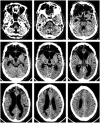The functional neuroanatomy of depression: distinct roles for ventromedial and dorsolateral prefrontal cortex
- PMID: 19428640
- PMCID: PMC2680780
- DOI: 10.1016/j.bbr.2009.03.004
The functional neuroanatomy of depression: distinct roles for ventromedial and dorsolateral prefrontal cortex
Abstract
A primary aim in the neuroscientific study of depression is to identify the brain areas involved in the pathogenesis of symptoms. In this review, we describe evidence from studies employing various experimental approaches in humans (functional imaging, lesion method, and brain stimulation) that converge to implicate the ventromedial and dorsolateral sectors of prefrontal cortex as critical neural substrates for depression, albeit with distinct functional contributions. The putative roles of ventromedial and dorsolateral prefrontal cortex in depression are discussed in light of the results.
Figures



References
-
- Davidson RJ, et al. Depression: perspectives from affective neuroscience. Annu Rev Psychol. 2002;53:545–74. - PubMed
-
- Drevets WC. Functional neuroimaging studies of depression: the anatomy of melancholia. Annu Rev Med. 1998;49:341–61. - PubMed
-
- Drevets WC. Orbitofrontal cortex function and structure in depression. Ann N Y Acad Sci. 2007;1121:499–527. - PubMed
-
- Kringelbach ML, Rolls ET. The functional neuroanatomy of the human orbitofrontal cortex: evidence from neuroimaging and neuropsychology. Prog Neurobiol. 2004;72(5):341–72. - PubMed
-
- Rosenkilde CE. Functional heterogeneity of the prefrontal cortex in the monkey: a review. Behav Neural Biol. 1979;25(3):301–45. - PubMed
Publication types
MeSH terms
Grants and funding
LinkOut - more resources
Full Text Sources
Other Literature Sources
Medical

